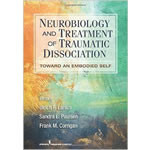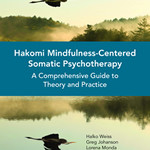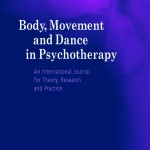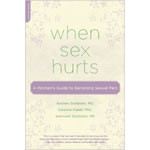
 Goldstein, A. (2011). When Sex Hurts: A Woman’s Guide to Banishing Sexual Pain.
Goldstein, A. (2011). When Sex Hurts: A Woman’s Guide to Banishing Sexual Pain.
Reviewed by: Michael Fiorini, New York University
When Sex Hurts: A Woman’s Guide to Banishing Sexual Pain is a medically informed self-help book directed at women who suffer severe and long term pain during sex, as well as general genital pain during contact with afflicted areas. Drawing from both a medical and psychological framework, the book breaks down the many reasons a person might be experiencing such pain. It makes clear that pain during sex is exceedingly common and often not well-understood or diagnosed, even by professionals. It also emphasizes that sex does not need to be painful, which is on its own a powerful notion for those who have always experienced such symptoms. Especially of note here is that the book is designed for women without any medical or psychological background, and a significant portion of what is covered is aimed at teaching, alleviating fears and insecurities, and helping readers develop comfort with their bodies. Primarily focusing on the medical and physical spectrum of the various potential and common causes of pain, the psychological influence of trauma, insecurity, intentions, communication, and comfort with sexual partners are present here but are not as emphasized narratively. For those therapists who wish to expand their own knowledge of the phenomenon, the book will bring them up to speed on the newest medical and psychological considerations in diagnosis and treatment.
When Sex Hurts is structured in three parts, essential background information, the root of the problem, and when pain is gone, each reflecting the healing process as part of a continuum. Readers first get an overview of the problem, the commonality of it, what forms it might take, and reasons it might be there. The book then moves on to discuss pain more generally and how to think about it medically and personally. The third chapter covers how best to address pain and symptoms you may have with your doctor, what terminology you should know, and explains that seeing different doctors might be necessary if what’s occurring isn’t being addressed effectively. The following chapter discusses how to contain damage to your relationship, with different avenues of communication and understanding discussed, as well as how to maintain a healthy romance in spite of pain. The next several chapters discuss the various specific causes of sexual pain, which comprises the majority of the book’s contents. Disorders, infections, the effects of childbirth, pelvic and nerve pain, and psychological influences among other things are covered here. It is all very detail-oriented in a way that is easy to digest for average readers. The final part of the book discusses how to pick up the pieces of your life once the pain is alleviated, and deals largely with interpersonal relationships, prognoses, and how to adjust into a truly fulfilling sex life.
Because it is such a pervasive factor in the lives of many women, it is highly likely that having an understanding of the problem of sexual pain will be useful for therapists and their clients. Because this is an issue that might come up in therapy, the problem warrants greater understanding so that informed guidance can be given. The portion of the book dedicated to the potential psychological roots of sexual pain are, admittedly, lacking in comparison to the far more expansive sections on medical and biological problems. In part, this is due to the authors being medical doctors, and also due to sexual pain having been inappropriately considered a primarily psychological problem for the last several decades. This is something the authors make clear does more harm than good and allows avoidance of effective steps towards symptom improvement. Ultimately, the book is significant because of the good that it can do for those women who experience this kind of pain and are not getting informed or proper advice on how to think about and address it. What that might entail informatively for professionals depends on their practice, and individual therapeutic considerations.
Andrew Golstein, MD, is the president of the International Society for Study of Women’s Sexual Health. Caroline Pukall, PhD., is a leading researcher of female sexual pain and dysfunction, and works as an associate professor at Queen’s University. Irwin Goldstein, MD, has performed patient care and research for sexual dysfunction for thirty years. All three also co-authored the influential textbook Female Sexual Pain Disorders, considered groundbreaking work on the topic.
Goldstein, A. (2011). When Sex Hurts: A Woman’s Guide to Banishing Sexual Pain. Cambridge, MA: Da Capo Press.
ISBN: 978-0-7382-1398-9.
Paperback. 250 pages. Includes glossary, notes, index, and references.

 One of my favorite lectures in the curriculum during the first week of class at Seattle School of Body-Psychotherapy is the one that combines information from the Heart Math institute, practices from Plant Medicine Healers in the Amazon, and Core Energetics.
One of my favorite lectures in the curriculum during the first week of class at Seattle School of Body-Psychotherapy is the one that combines information from the Heart Math institute, practices from Plant Medicine Healers in the Amazon, and Core Energetics.



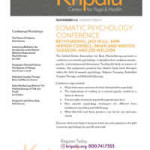


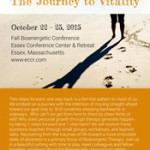



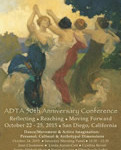
 Our process illuminates transgenerational, multi-cultural and other dimensions of human development. We have studied and explored the ancestors, early memories, the multi-sensory nature of the psyche, the relationship between consciousness and the unconscious (including the cultural unconscious and cultural complexes), with special attention to moods and emotions contained by diverse perspectives on the mover-witness relationship. Experiential explorations of these and other topics, an important component of the seminars, includes various practices, encompassing elements of authentic movement, improvisation, sandplay, art, journaling, as well as elements of choreography that may emerge as repeatable choreographic themes.
Our process illuminates transgenerational, multi-cultural and other dimensions of human development. We have studied and explored the ancestors, early memories, the multi-sensory nature of the psyche, the relationship between consciousness and the unconscious (including the cultural unconscious and cultural complexes), with special attention to moods and emotions contained by diverse perspectives on the mover-witness relationship. Experiential explorations of these and other topics, an important component of the seminars, includes various practices, encompassing elements of authentic movement, improvisation, sandplay, art, journaling, as well as elements of choreography that may emerge as repeatable choreographic themes.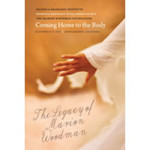
 November 6, 2015 – November 8, 2015
November 6, 2015 – November 8, 2015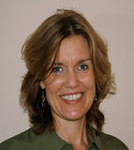

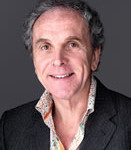




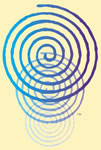


 Dear Friends & Colleagues,
Dear Friends & Colleagues,

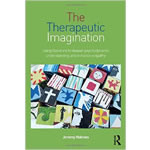


 Here is a little taste of what I teach at Seattle School of Body-Psychotherapy. A great benefit of living in this time is that we have access to practices from so many different orientations. I love being able to integrate my work and studies from many different areas of my life into the curriculum here. These practices bring us into deeper contact with our real Self and the creative Life Force which can never die, always seeks expression, and awakens us to walk with awareness that everything is Alive!
Here is a little taste of what I teach at Seattle School of Body-Psychotherapy. A great benefit of living in this time is that we have access to practices from so many different orientations. I love being able to integrate my work and studies from many different areas of my life into the curriculum here. These practices bring us into deeper contact with our real Self and the creative Life Force which can never die, always seeks expression, and awakens us to walk with awareness that everything is Alive!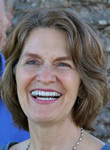

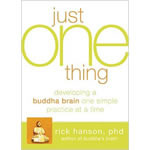


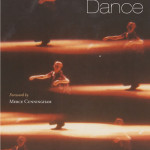

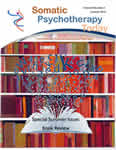

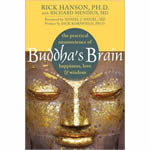






 The last day of the week another student brought our yoga teacher an extraordinary gift. More than 6 months previously he had seen a crowd funding campaign quite out of the range of his normal interests that he ended up contributing to. Although he had no idea what he would do with it when he received it, for many months he wondered when he would finally get the merchandise that he paid for in supporting the new company. When our yoga teacher chose to work on this particular dream in class he had a hunch it would be coming soon and sure enough, when he got home that night there was a package waiting for him.
The last day of the week another student brought our yoga teacher an extraordinary gift. More than 6 months previously he had seen a crowd funding campaign quite out of the range of his normal interests that he ended up contributing to. Although he had no idea what he would do with it when he received it, for many months he wondered when he would finally get the merchandise that he paid for in supporting the new company. When our yoga teacher chose to work on this particular dream in class he had a hunch it would be coming soon and sure enough, when he got home that night there was a package waiting for him.